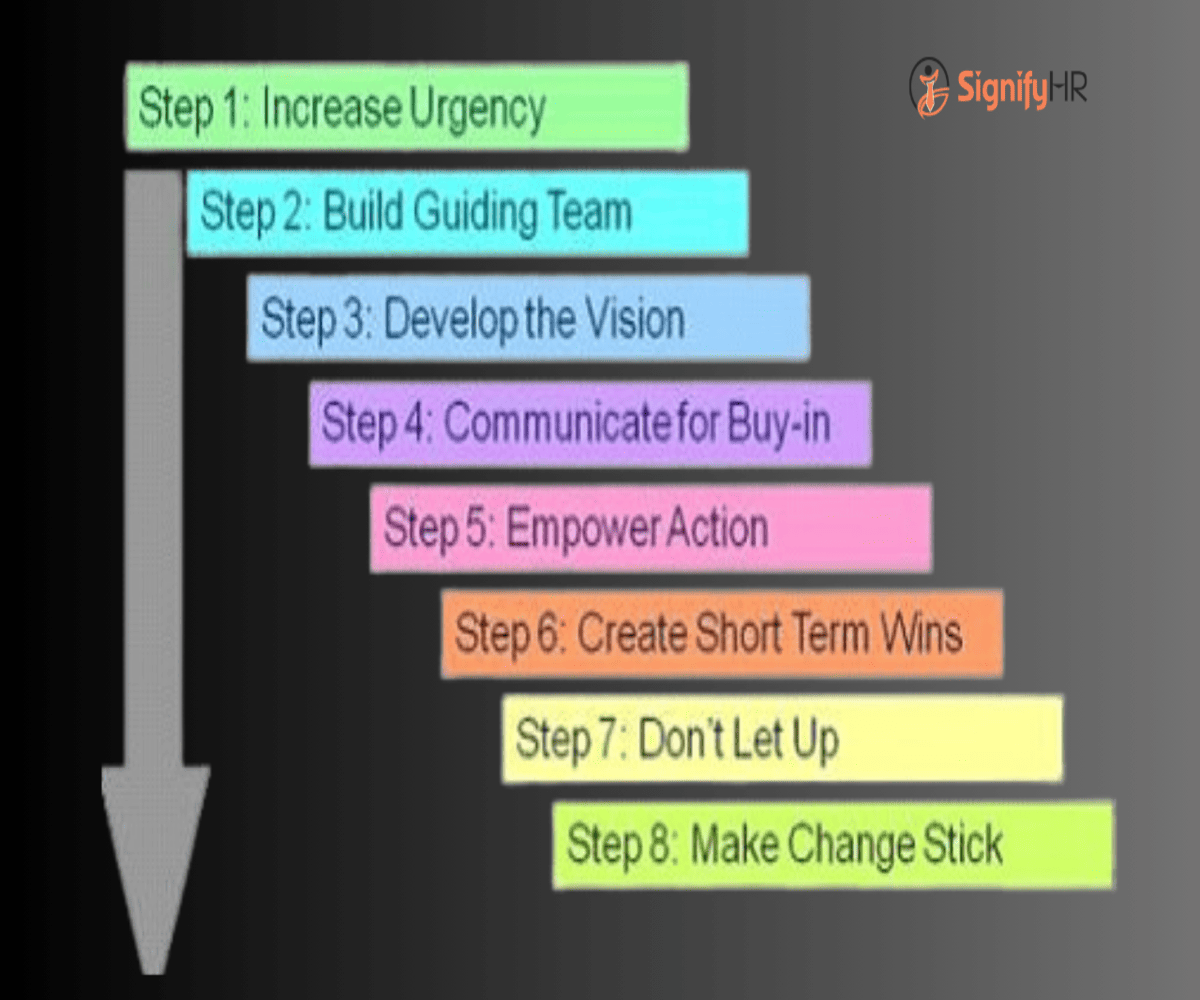Change is an inevitable part of any business or organization. Whether adapting to market trends, implementing new technologies, or restructuring operations, successful change management is crucial. One of the most effective frameworks for managing organizational change is Kotter’s 8-Step Change Model, developed by Dr. John P. Kotter, a Harvard Business School professor and change management expert.
This model provides a structured approach to help organizations navigate change smoothly and achieve long-term success. Let’s explore each step in detail and understand how it applies to management courses and business leadership.
Understanding Kotter’s 8-Step Change Model
Step 1: Create a Sense of Urgency
Before any change initiative begins, the organization must establish a compelling reason for change. Leaders should communicate the risks of inaction and highlight potential benefits to encourage stakeholder buy-in.
Key Actions:
- Identify potential threats and opportunities.
- Share data-driven insights to highlight the need for change.
- Encourage open discussions and stakeholder involvement.
Step 2: Build a Guiding Coalition
A strong leadership team is essential for driving change. This coalition should consist of influential leaders, managers, and employees who support the transformation.
Key Actions:
- Identify and involve key stakeholders.
- Build trust and collaboration among team members.
- Ensure diverse perspectives are represented in decision-making.
Step 3: Develop a Vision and Strategy
A clear and compelling vision provides direction and motivation. This vision should be accompanied by a strategic roadmap detailing how the organization will achieve its goals.
Key Actions:
- Define clear and measurable objectives.
- Develop an actionable roadmap with milestones.
- Align the change initiative with overall business goals.
Step 4: Communicate the Vision
Effective communication is critical to ensuring everyone understands and supports the change. Leaders must use various channels to consistently convey the vision and engage employees.
Key Actions:
- Use storytelling and real-life examples to illustrate the vision.
- Conduct meetings, workshops, and presentations.
- Address concerns and provide regular updates.
Step 5: Remove Obstacles and Empower Employees
Barriers to change, whether organizational or individual, must be identified and removed. Employees should be equipped with the necessary resources, skills, and authority to contribute effectively.
Key Actions:
- Identify resistance and address concerns proactively.
- Provide training, resources, and support.
- Encourage a culture of accountability and innovation.
Step 6: Generate Short-Term Wins
Early successes boost morale and reinforce the belief that change is beneficial. Recognizing and celebrating small achievements keeps momentum strong.
Key Actions:
- Set short-term goals that align with the larger vision.
- Recognize and reward contributions from employees.
- Share success stories to inspire ongoing efforts.
Step 7: Sustain Acceleration and Build on Change
Sustaining change requires continuous improvement and reinforcement. Organizations must analyze results, make necessary adjustments, and expand successful initiatives.
Key Actions:
- Monitor progress and refine strategies.
- Address gaps and challenges proactively.
- Foster a culture of continuous learning and adaptation.
Step 8: Anchor the Changes in Corporate Culture
For change to be lasting, it must become part of the organization’s DNA. Leaders should integrate new practices into daily operations and reinforce them through policies, performance metrics, and cultural shifts.
Key Actions:
- Embed new behaviors into the company’s core values.
- Train and mentor employees to sustain the transformation.
- Regularly assess and improve change strategies.
Conclusion
Kotter’s 8-Step Change Model offers a structured and practical approach to implementing successful organizational change. For management students and professionals, understanding this model is essential for driving transformation, overcoming resistance, and fostering a culture of adaptability.
By applying these principles, organizations can navigate change more effectively, ensuring long-term success and competitive advantage in an ever-evolving business landscape.
Key Takeaways:
- Change management requires urgency, leadership, communication, and continuous reinforcement.
- Short-term wins boost momentum, but sustainability comes from cultural integration.
- Successful change leaders inspire, empower, and adapt proactively.
Mastering Kotter’s Change Model equips managers and business leaders with the tools needed to lead successful transformations, making it an essential topic in management courses and corporate leadership training.

